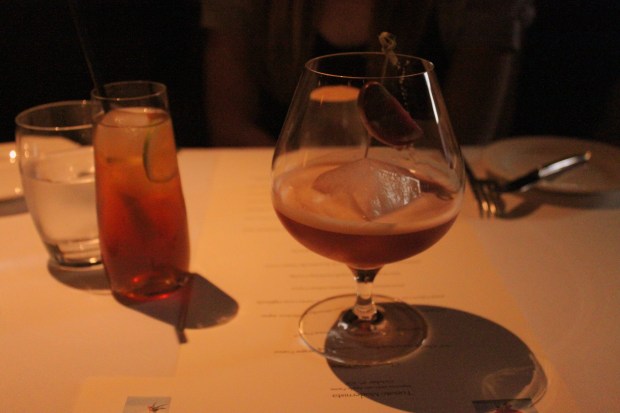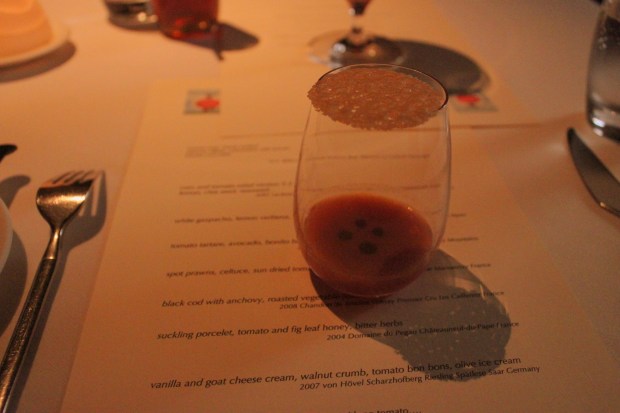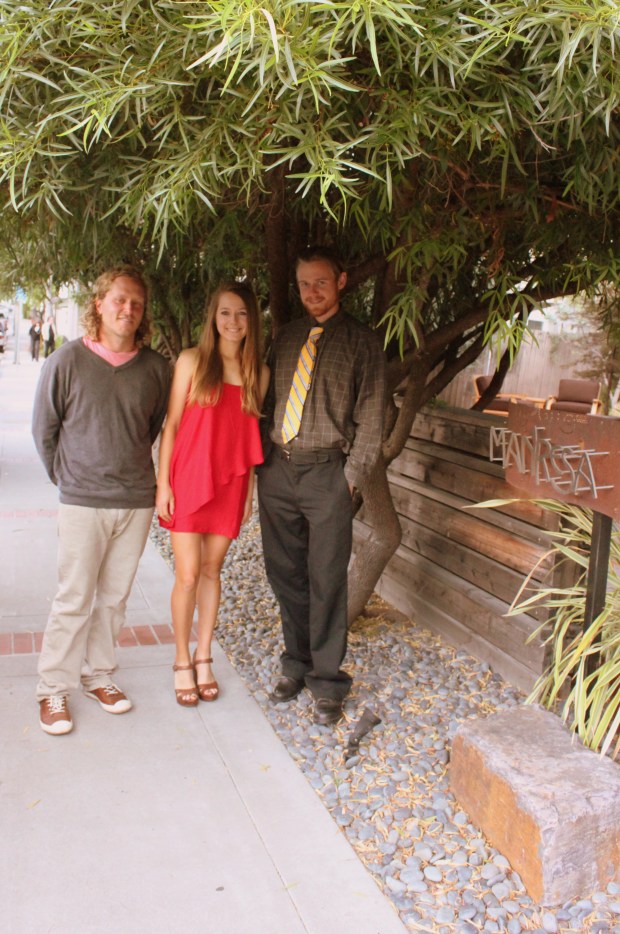tomato modernista dinner at manresa
It was late January whenI first met Cynthia and Manresa Chef David Kinch in New York, and looking back now as I sit pajama-ed in the kitchen watching the wild turkeys outside it seems the setting couldn’t have been more different. That day I rode the elevator down 36 floors to meet them in the lobby of the Hearst Building. The three of us sat with the farm’s publicist, and as the face of O Magazine I nodded and smiled politely as she told me about the renovations both the farm and the restaurant were undergoing. Then Cynthia began to talk, and in describing the relationship between Love Apple and Manresa she said something that struck me: closed-loop. It’s taken almost a year to understand what that means in the new wave of food modernism that Manresa and Love Apple pioneer, but when I ate at the restaurant for the first time this past Sunday night I felt I’d journeyed that full loop—and in doing so, I’ve glimpsed what I was looking for when I took that elevator all those months ago.
Coming from Love Apple to eat at Manresa you can’t help but notice the food—after all, those were my mustard greens there on the plate, the Purple Mizuna and Golden Frill I sowed four weeks ago and touched fondly as I watered them every day in the greenhouse. And the tomatoes: the Black Prince suspended in a cocktail with cucumber and anise hyssop, the barely-cooked Sungolds still clinging to their truss, the Oxhearts and Beefsteaks transformed into slivers of sun-dried tomato or a rich honey to accompany crisped porcelet. Cooking with produce from the farm most of us tend to stay fairly straightforward, with slices of sautéed zucchini or whole leaves of braised Toscano kale. At Manresa, ingredients are transported, their true nature not so much transformed as revealed in new and unexpected ways.
With each new course, though, what ultimately made an impression was something larger than the food. Eating at Manresa is about just that—eating, and the intimate, sensual, and delightful experience it can be. Once you give yourself over to that experience it’s less about identifying ingredients and more about the true pleasures of ritual and taste and company. Four hours pass without your noticing the time because that is what eating can do when it is savored—take you somewhere else entirely, be that place the revelation of new ways of tasting or the comfort of childhood memory. Leaving Manresa that night I felt proud of everything I’ve done here, because the experience of eating is something I care about deeply. It can be as comfortably ordinary as the ritual of making my pancakes each morning–or as entirely memorable as surrendering to the experience that is eating at Manresa.







Sara! 1.) You look gorgeous in that picture 2.) I miss you!! 3.) I love your blog so much! Your writing is so pleasant and easy to read and I love how you’re able to relate lessons learned in life to the food you are experiencing. Keep it up and I’ll keep reading! 🙂
I’m so glad you wrote about this–I was so curious to hear how it was. It sounds amazing! And I agree–eating and talking and drinking and just enjoying for 4+ hours is the truest and best way to appreciate something.